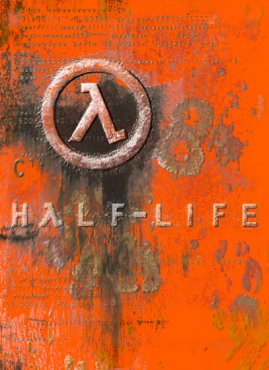
Half-Life is a 1998 first-person shooter game developed by Valve Corporation and published by Sierra Studios for Windows. It was Valve's debut product and the first game in the Half-Life series. The player assumes the role of Gordon Freeman, a scientist who must escape from the Black Mesa Research Facility after it is invaded by aliens following a disastrous scientific experiment. The gameplay consists of combat, exploration and puzzles.

Valve Corporation, also known as Valve Software, is an American video game developer, publisher, and digital distribution company headquartered in Bellevue, Washington. It is the developer of the software distribution platform Steam and the game franchises Half-Life, Counter-Strike, Portal, Day of Defeat, Team Fortress, Left 4 Dead and Dota.

Phantasy Star Online is an online role-playing game (RPG) developed by Sonic Team and published by Sega in 2000 for the Dreamcast. It was the first successful online RPG for game consoles; players adventure with up to three others over the internet to complete quests, collect items and fight enemies in real-time action RPG combat. The story is unrelated to previous games in the Phantasy Star series.

ChuChu Rocket! is an action puzzle game developed by Sonic Team and published by Sega. Released for the Dreamcast in 1999, it was the first game for the system to support online console gaming. Players must place arrows on a board to lead mice into escape rockets while avoiding cats. The game features single-player modes in which a player must save all the mice on a board, and a multiplayer mode in which players battle to collect the most mice.

Team Fortress Classic is a first-person shooter game developed by Valve and published by Sierra Studios. It was originally released in April 1999 for Windows, and is based on Team Fortress, a mod for the 1996 game Quake. The game puts two teams against each other in online multiplayer matches; each member plays as one of nine classes, each with different skills. The scenarios include capture the flag, territorial control, and escorting a "VIP" player.
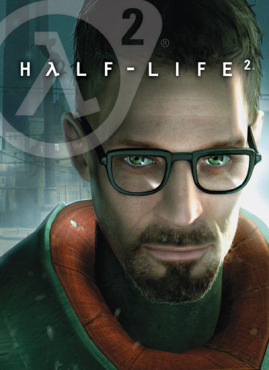
Half-Life 2 is a 2004 first-person shooter (FPS) game developed and published by Valve Corporation. It was published for Windows on Valve's digital distribution service, Steam. Like the original Half-Life (1998), Half-Life 2 combines shooting, puzzles, and storytelling, and adds new features such as vehicles and physics-based gameplay. The player controls Gordon Freeman, who joins a resistance to liberate Earth from the Combine, an interplanetary alien empire.
Source is a 3D game engine developed by Valve. It debuted as the successor to GoldSrc in 2004 with the releases of Half-Life: Source, Counter-Strike: Source, and Half-Life 2. It is most well-known for its usage by Valve, but the engine has been used both by small teams and individuals to create modifications of Valve games, and other studios creating distinct games, notably Troika Games' title Vampire: The Masquerade – Bloodlines. Valve continued to create incremental updates to the Source engine after its 2004 release, most of which coincided with games created by Valve. In the late 2010s, Valve created the Source 2 engine to replace Source, with it publicly debuting alongside Half-Life: Alyx. The Source engine is most well-known for its advancements in physics, AI, and graphics.

Half-Life: Blue Shift is an expansion pack for the first-person shooter video game Half-Life (1998). It was developed by Gearbox Software and published by Sierra On-Line. Blue Shift was the second expansion for Half-Life, originally intended as part of a Dreamcast port of Half-Life. Although the Dreamcast port was cancelled, the Windows version was released as a standalone product on June 12, 2001 for Windows. It was released on Steam on August 24, 2005.
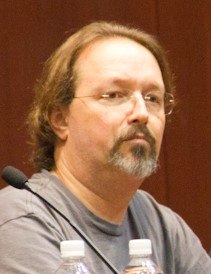
Marc Laidlaw is an American writer. He is a former lead writer for the video game company Valve, where he worked on the Half-Life series before his departure in 2016. Before joining Valve, Laidlaw was a novelist working in the fantasy and horror genres, and in 1996 won the International Horror Guild Award for his novel The 37th Mandala.
Arkane Studios SASU is a French video game developer based in Lyon. It was founded in 1999, and released its first game, Arx Fatalis, in 2002. Besides the Lyon studio, Arkane Lyon, Arkane Studios operated Arkane Studios LLC in Austin, Texas, from July 2006 until its closure in May 2024. The studio has created the popular Dishonored series as well as developing Prey (2017), Deathloop (2021) and Redfall (2023). Marvel's Blade is under development.

Ravenholm is a fictional ghost town in the first-person shooter game Half-Life 2, developed by Valve Corporation and released in 2004. It serves as the primary setting for the game's sixth chapter, "We Don't Go to Ravenholm", which follows the game's protagonist Gordon Freeman as he journeys through the area as part of an escape from Black Mesa East after it is attacked by Combine forces in order to reach a nearby Resistance outpost. Ravenholm is a mining town in Eastern Europe destroyed by a Combine bombardment using headcrabs that turned its residents into hostile zombies. Its sole survivor, Father Grigori, offers his assistance to Freeman throughout the level, culminating in a last stand at the town's cemetery.

Junction Point Studios (JPS) was an American video game developer based in Austin, Texas founded by Deus Ex creator, Warren Spector, in 2004. Disney Interactive Studios acquired Junction Point Studios in July 2007 to develop a property based on Oswald the Lucky Rabbit, a character created by Walt Disney but owned by Universal Studios until the character was acquired by The Walt Disney Company from Universal in 2006. The studio was closed in 2013.
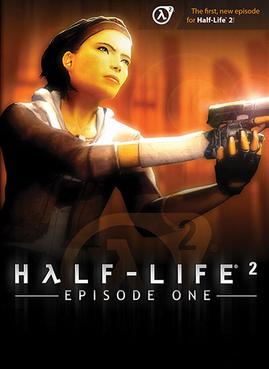
Half-Life 2: Episode One is a 2006 first-person shooter game developed and published by Valve for Windows. It continues the story of Half-Life 2 (2004); as scientist Gordon Freeman, players must escape City 17 with Gordon's companion Alyx Vance. Like previous Half-Life games, Episode One combines shooting, puzzles and storytelling.
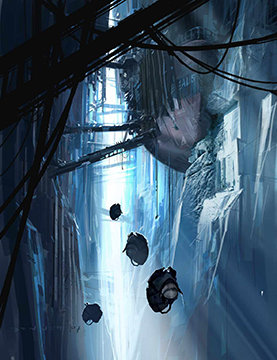
Half-Life 2: Episode Three is a canceled first-person shooter game developed by Valve. It was planned as the last in a trilogy of episodic games continuing the story of Half-Life 2 (2004). Valve announced Episode Three in May 2006, with a release planned for 2007. Following the cliffhanger ending of Episode Two (2007), it was widely anticipated. Marc Laidlaw, the writer for the Half-Life series, said he intended Episode Three to end the Half-Life 2 story arc.

Half-Life is a series of first-person shooter (FPS) games created by Valve. The games combine shooting combat, puzzles and storytelling.
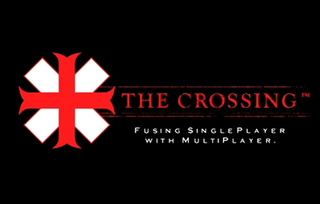
The Crossing is a cancelled first-person shooter video game by Arkane Studios, which attempted to fuse single-player and multiplayer by threading its single-player campaign through live multiplayer games.

The Orange Box is a video game compilation containing five games developed and published by Valve. Two of the games included, Half-Life 2 and its first stand-alone expansion, Episode One; had previously been released as separate products. Three new games were also included in the compilation: the second stand-alone expansion, Half-Life 2: Episode Two; the puzzle game Portal; and Team Fortress 2, the multiplayer game sequel to Team Fortress Classic. Valve also released a soundtrack containing music from the games within the compilation. A separate product entitled The Black Box was planned, which would have included only the new games, but was later canceled.
Counter-Strike (CS) is a series of multiplayer tactical first-person shooter video games in which teams of terrorists battle to perpetrate an act of terror while counter-terrorists try to prevent it. The series began on Windows in 1999 with the release of the first game, Counter-Strike. It was initially released as a modification ("mod") for Half-Life that was designed by Minh "Gooseman" Le and Jess "Cliffe" Cliffe before the rights to the mod's intellectual property were acquired by Valve, the developers of Half-Life, who then turned Counter-Strike into a retail product released in 2000.

Half-Life: Alyx is a 2020 virtual reality (VR) first-person shooter game developed and published by Valve. It was released for Windows and Linux, with support for most PC-compatible VR headsets. Set five years before Half-Life 2 (2004), players control Alyx Vance on a mission to seize a superweapon belonging to the alien Combine. Like previous Half-Life games, Alyx incorporates combat, puzzles and exploration. Players use VR to interact with the environment and fight enemies, using "gravity gloves" to snatch objects from a distance, similarly to the gravity gun from Half-Life 2.
















